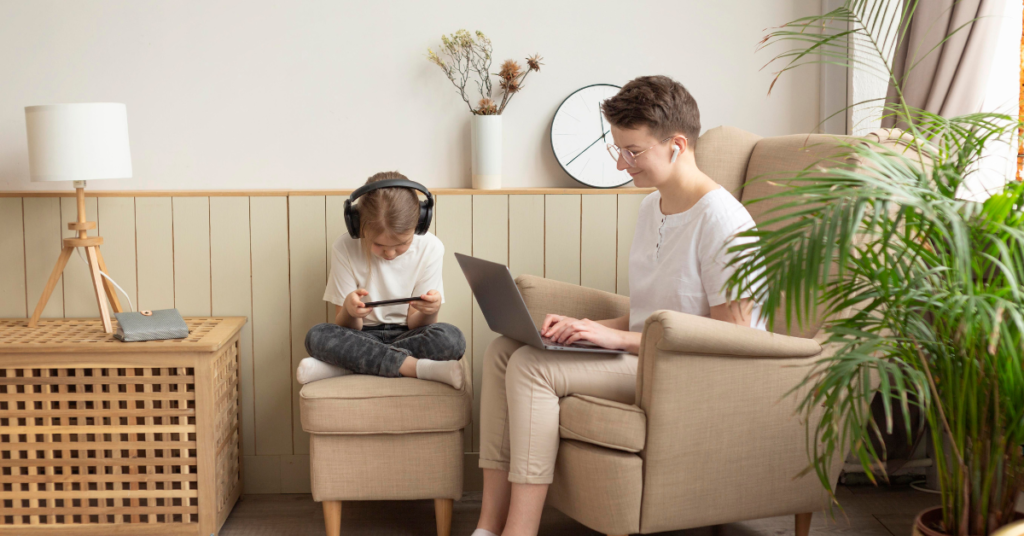The allure of working from home can be captivating: no commute, a more flexible schedule, and the ability to design your workspace. However, remote work isn’t without challenges, especially when it comes to maintaining a balance between professional and personal life. Embracing Healthy Remote Work Habits is essential for overcoming these challenges, as many find themselves trapped in an unintended consequence: working more than ever before. Let’s dive into how you can master balance, prevent burnout, and foster a sustainable work-from-home routine.
Why Overworking from Home Happens
When your office is also your living room, the lines between work and personal life can blur. According to research, remote workers often clock in longer hours than their in-office counterparts. But why does this happen? Here are some reasons:
- Blurred Boundaries: Without a clear division between “work” and “home,” it’s easy to let work seep into personal time.
- Lack of Routine: The absence of a commute removes a natural start and end to the workday.
- Increased Connectivity: With constant access to work tools, there’s a temptation to respond to messages and emails at all hours.
- Self-Imposed Pressure: Remote workers might feel the need to prove productivity, leading to overworking.

Practical Solutions for Work-Life Harmony: Healthy Remote Work Habits
Achieving a healthy work-life balance while working remotely requires intentional effort. Therefore, here are actionable strategies to help:
1. Create a Dedicated Workspace
Designate a specific area in your home as your “office.” This doesn’t have to be a separate room, but it should be a consistent space where you work. Consequently, having a defined area helps signal the start and end of the workday.
Example: Use a folding table and a comfortable chair in a corner of your living room. When the workday is done, pack up the setup to transition back to personal time.
2. Establish a Routine
Create a schedule that mimics the structure of a traditional office day. Set a start and end time, and stick to it. Additionally, incorporating rituals can make the routine more effective.
Solution: Start your morning with a ritual—maybe a cup of coffee or a quick workout. Conclude your day with a wind-down activity, like journaling or reading.
3. Take Regular Breaks
Breaks are essential to maintaining productivity and mental well-being. For instance, you can use techniques like the Pomodoro method: work for 25 minutes, then take a 5-minute break.
Example: Set a timer to remind yourself to step away from your desk. Use your break to stretch, hydrate, or step outside for fresh air.

4. Define Clear Boundaries
Communicate your working hours to colleagues and family members. Furthermore, set boundaries to minimize interruptions during work and to protect your personal time after hours.
Example: Use an “away” status on work tools after hours and refrain from checking emails once your workday ends.
5. Adopt Time-Blocking
Allocate specific time slots for work tasks, personal errands, and relaxation. As a result, this helps you stay focused and ensures you’re dedicating time to all areas of life.
Solution: Use tools like Google Calendar or a planner to schedule focused work periods, lunch breaks, and time for hobbies.
6. Leverage Flexibility
One of the perks of remote work is flexibility. Therefore, use it to your advantage by tailoring your schedule to fit your energy peaks and personal needs.
Example: If you’re more productive in the morning, tackle your most challenging tasks then. Use the afternoon for lighter work or personal errands.
7. Practice Digital Detox
After your workday ends, disconnect from work devices. This mental separation is critical for recharging. Consequently, this helps maintain your overall well-being.
Example: Store your laptop and work phone in a drawer during non-working hours. Use this time to connect with family or engage in a hobby.

Overcoming Burnout
Burnout is a real risk when working from home. Thus, here’s how to identify and address it:
Signs of Burnout:
- Persistent fatigue
- Difficulty concentrating
- Increased irritability
- Loss of interest in work
Solutions:
- Seek Support: Talk to your manager or HR about workload concerns.
- Prioritize Self-Care: Incorporate activities like meditation, exercise, or creative hobbies into your day.
- Take Time Off: Don’t hesitate to use vacation days to recharge, even if you’re not traveling.
Redefining Productivity
Productivity isn’t about the hours worked but the outcomes achieved. Hence, shift your mindset:
- Focus on completing tasks, not clocking hours.
- Celebrate small wins to maintain motivation.
- Use tools like Trello or Asana to track progress.
Example: At the end of the day, review your accomplishments and plan your top priorities for tomorrow.
Final Thoughts: Healthy Remote Work Habits
Working from home is an opportunity to redefine how you approach work and life. By setting boundaries, embracing flexibility, and prioritizing self-care, you can create a routine that supports both productivity and well-being. Explore more about Wellness Trends for 2025 and Work-Life Balance, and dive into our Health and Wellness category for valuable insights. Ultimately, remember: the goal isn’t just to work from home but to thrive while doing so.


